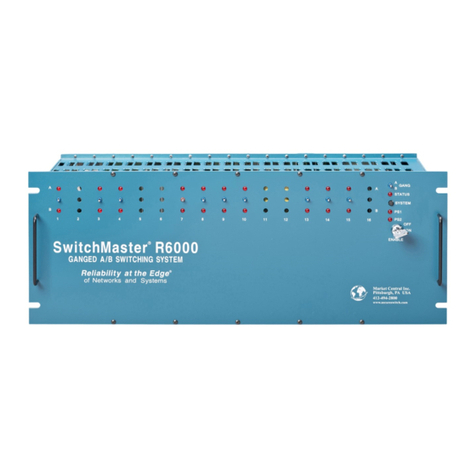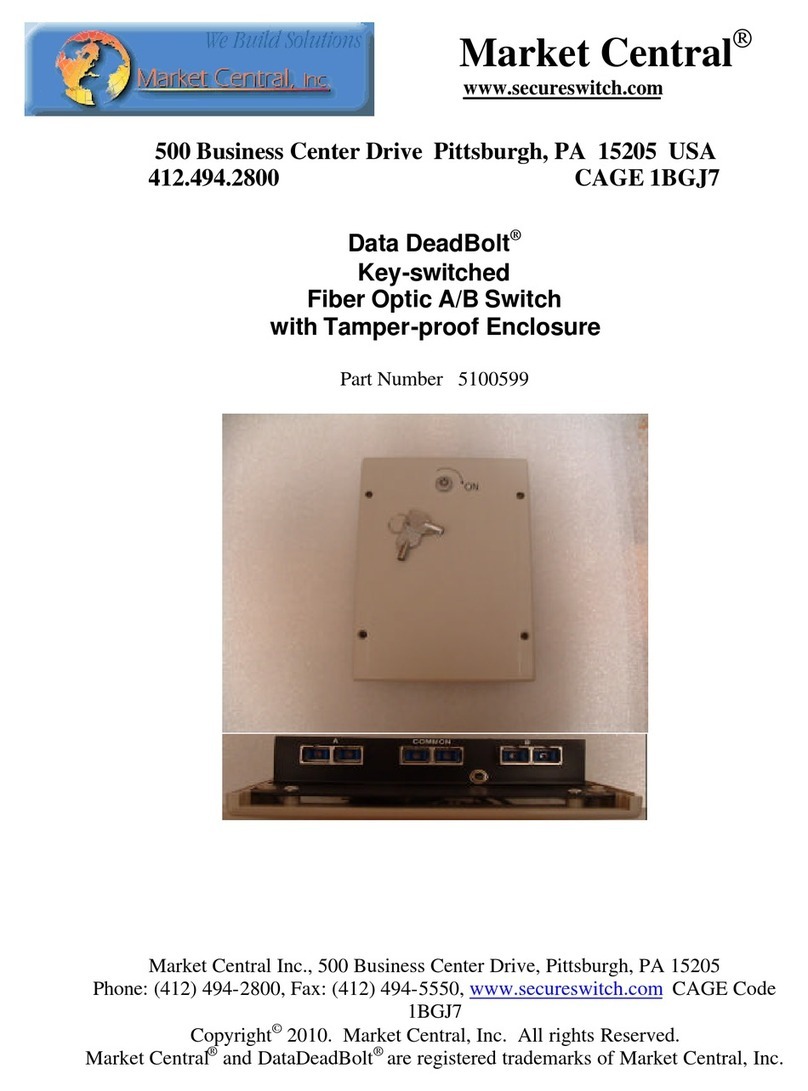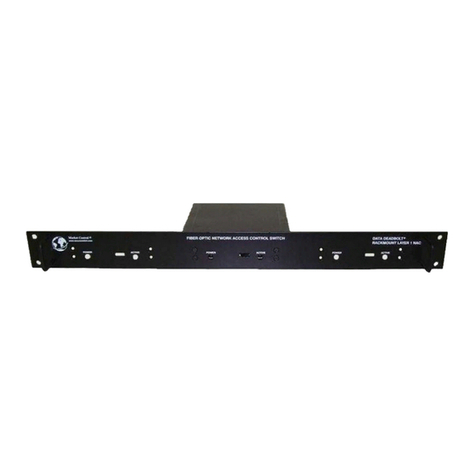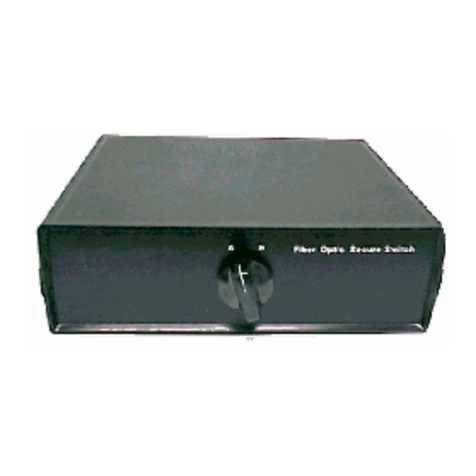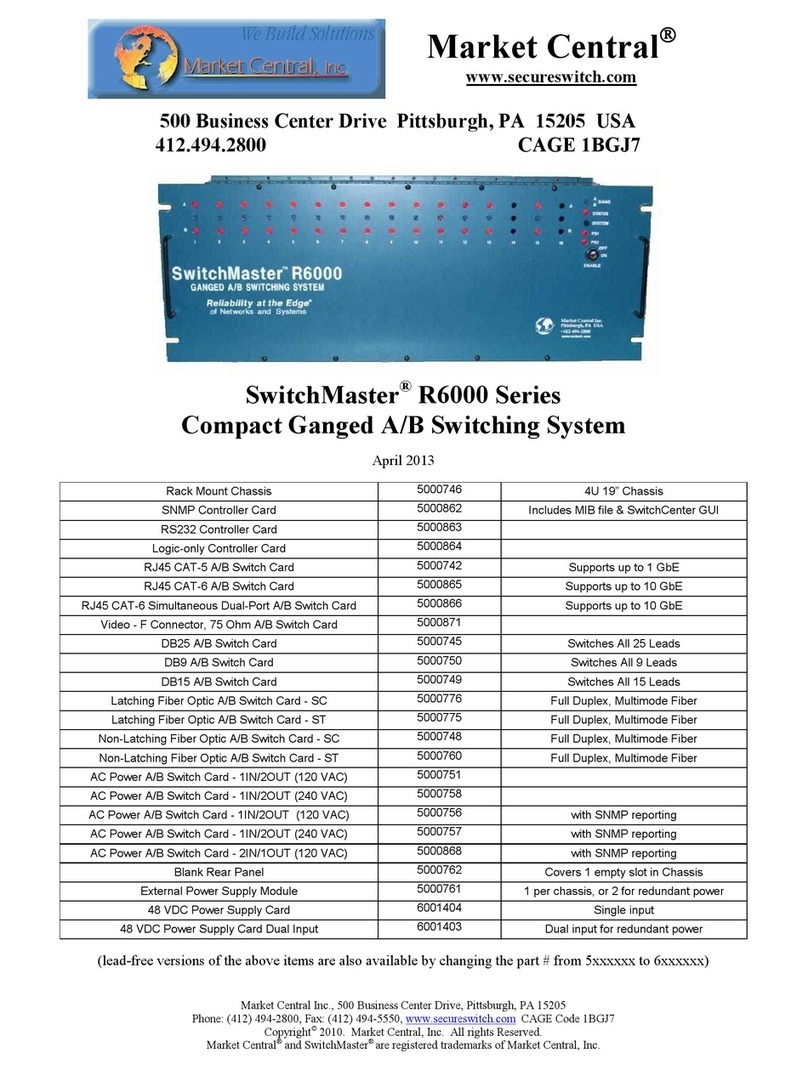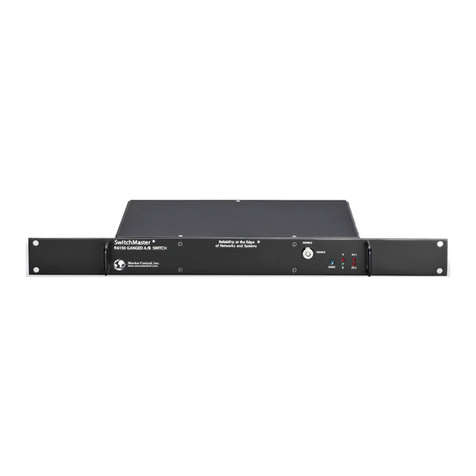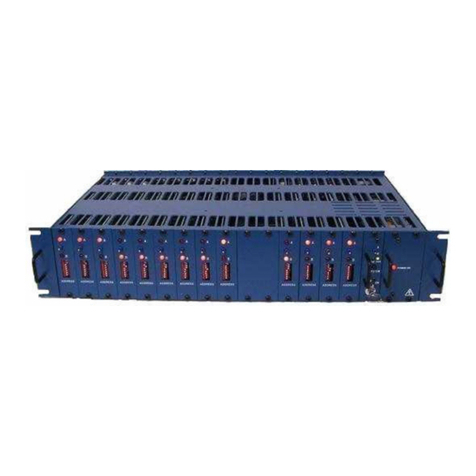
Market Central, Inc.
D1000 LAYER-1 A/B SWITCH Page 8of 22
The D1000 also has the ability to issue either SNMP traps, or UDP syslog messages. These messages can be sent to
one or more network administrator systems to provide notification when the D1000 changes connection states either
automatically (auto bypass switching or auto recovery switching) or via manual control (front panel toggle switch or
commands received on the RS232 or Ethernet interfaces), and when certain other events occur. See section 10 and
section 11 for additional details.
To restrict access to the D1000, each of the Ethernet interface options (SNMP, telnet, and web browser) can be
independently enabled/disabled, and if enabled, can be configured to require a login password. Additionally, user
access can be restricted by IP address so only commands received from pre-defined “administrator” IP addresses
will be acknowledged and acted upon. See section 7 for additional information regarding these commands.
5.5 Automatic Switching
The D1000 A/B switch models that support Ethernet remote control can also be configured to automatically switch
the connection state (port C connected to port A or port C connected to port B). In order to be able to perform the
auto-switching functions, the D1000 issues ICMP echo request (PING) packets from its Ethernet network interface
to a user configurable IP address on the network. The auto-switching function can be configured to operate in one
of two modes. In FAILOVER mode (the default mode), the auto-switching function switches to the “failover” or
“bypass” connection state (port C connected to port A) when PING responses are not received, and if configured to
“auto recover” it switches to the “normal” connection state (port C connected to port B) when PING responses are
received. In TOGGLE mode, the auto-switching function toggles the connection state from A to B or from B to A
when PING responses are not received, and maintains the connection state port C connected to port A or port B
when PING responses are received. User configurable parameters control the auto-switching functions to allow the
switch to be used in a variety of applications.
In FAILOVER mode, if the “normal” network path connections between the D1000 and the device being monitored
go down for any reason, the D1000 will no longer be able to PING the specified IP address, and will then
automatically switch from the “normal” connection state (port C connected to port B) to the “bypass” or “failover”
connection state (port C connected to port A). Once the problems on the primary path have been identified and
corrected, the user can issue a command to cause the D1000 to switch from the failover connection state back to the
normal connection state. If auto recovery is enabled, the D1000 will automatically re-connect the normal path
connections when it is again able to PING the user specified IP address. When using the auto recovery feature, it is
important that the Ethernet network port on the D1000 be connected to the user’s network such that the normal path
is continuously being monitored even when the backup path has been selected, otherwise the D1000 could
repeatedly switch (flap) back and forth between the failed primary path and the functioning backup path.
In TOGGLE mode, if the “current” network path connections between the D1000 and the device being monitored go
down for any reason, the D1000 will no longer be able to PING the specified IP address, and will then automatically
switch to the “alternate” connection state, trying to restore successful PING responses. In this mode, the auto-
switching function will toggle between (port C connected to port B) and (port C connected to port A), until it
receives responses to its PING requests. The D1000 will then remain in the current connection state (port C
connected to port B or port C connected to port A), until the user issues a command to cause the D1000 to switch
connections, or should the D1000 fail to receive PING responses. When in TOGGLE mode, it is important that the
D1000 Ethernet network port be connected to the user’s network such that the current path is being monitored.
See the diagrams below for examples of auto switching configurations.
